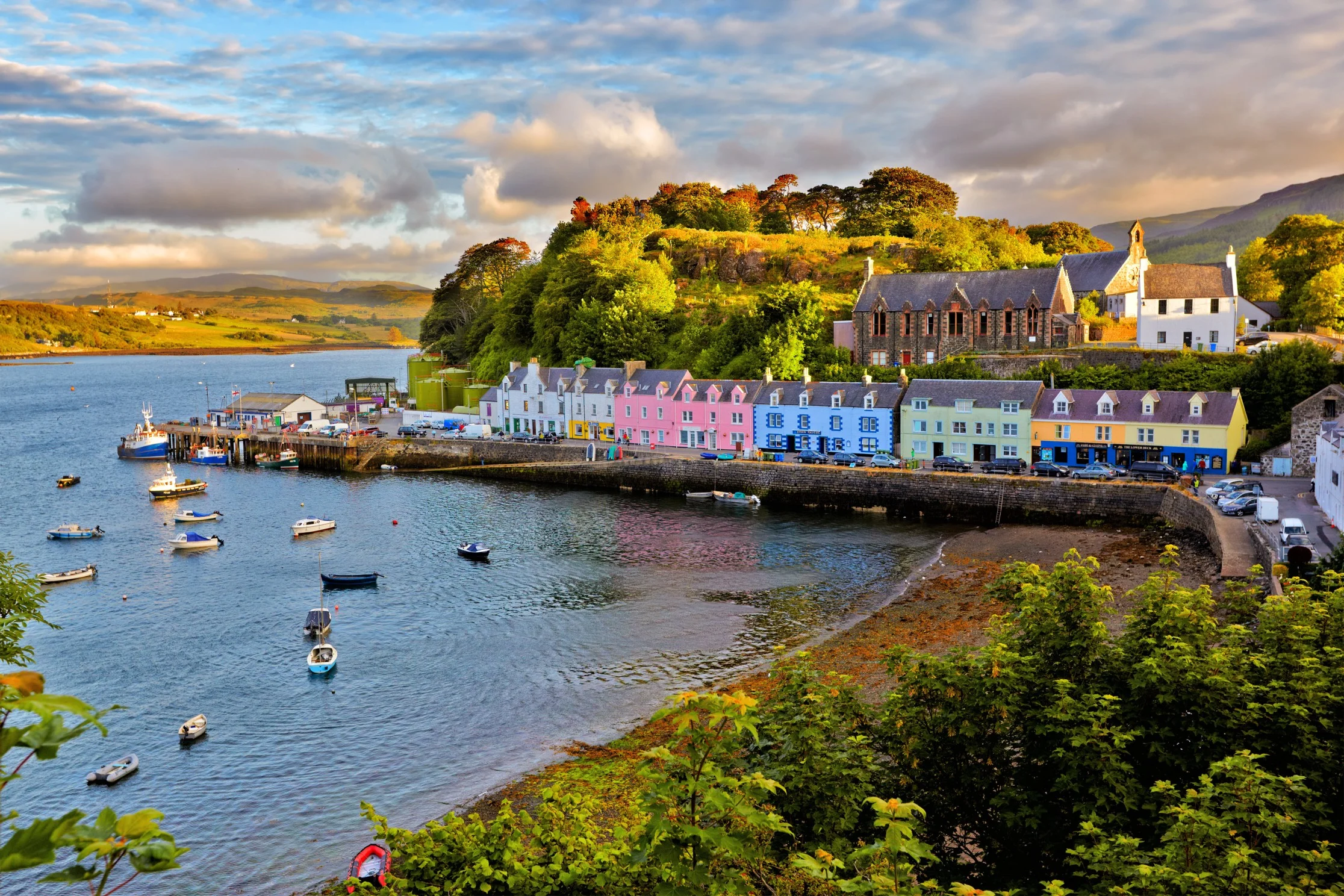I finished my last blog by saying that skilful practitioners of cultural placemaking help places generate meaning for the people who inhabit them. Now I’m going to explain why it matters.
As humans, the search for meaning defines our lives. We seek it in the ways we express our personal identity, from our work, by finding a sense of belonging with others, in our spiritual beliefs – even the brands we buy. And for most of human history a primary source of our meaning has been our physical environment – our place.
I have a favourite place in the land of some of my ancestors, the town of Portree on the Isle of Skye. Like so many towns around the world, it is a direct response to its place, invested with the cultural meaning of its people.
The story of Portree is written in the fabric of its being. The town is facing the harbour that sustains it. People have fished from this harbour in naturally sustainable ways for hundreds of years, and in the cultural expression of the songs and stories in the local pubs the echoes of that practice can still be heard.
Portsee
Enabling the industry that underpins the town’s economy, a boatyard occupies the prime location at the end of the main street. Almost everything is made from local stone, painted in bright colours to remind the residents of life to come after the long grey northern winter. The town’s sense of place is embedded in every aspect of its existence.
In contemporary terms, the biggest asset that towns like Portree possess is the meaning that their distinctive character generates for their citizens - and communicates to the world. As well as offering a sense of identity and belonging to their communities it is these qualities that attract new people and invigorate the local economy.
Despite knowing this, for a large part of the post-war period we have largely failed to bring these qualities into our contemporary urban environments. Industrial processes and materials in the modern era enable us to build at speed and scale. While this can result in astounding feats of construction, industrialised development processes do not easily accommodate cultural expression. Our hearts and heads are no longer connected to the work of our hands in creating the places we inhabit. With the loss of that connection went much of our ability to generate meaning within our built environments.
Instead, industrial efficiency has often led to generic and homogenous places, devoid of meaning. Worldwide, one place becomes indistinguishable from the next with little thought for the distinctiveness and character that invests them with cultural meaning. With this homogenisation we lose the cultural diversity that makes the places of the world interesting. The lift in our spirits that we experience in culturally unique and distinctive places is gone. With that loss goes a little of our humanity.
Not before time, the last few years has seen a seismic shift in thinking as the development industry chooses to embrace its broader responsibility to build for people and planet. Now, almost the whole industry is engaged in a steep turn toward the human-centric. And that means authentic engagement with place as a primary source of meaning for people.
Most developers, knowing their work is generational and at scale, wish to leave the best legacy they can. What often stops them is lack of knowledge. More and more we hear words about Place spoken and the desire to genuinely engage with it expressed. Yet the outcomes lag well behind the rhetoric. There’s a lack of certainty about how to convert intentions into reality.
That’s because, in the industrialised development industry of the last few decades, we’ve baked in a structure that’s efficient at speed and scale, but manifestly poor at working around the human experience of place. Like all structures that have become established over long periods of time, it can’t be changed overnight. But it is changing.
Developers are used to considering the data that determines the feasibility of their projects. That won’t change and nor should it. But the structure and orientation of the development industry is adapting.
Now emerging organisations like ours are showing the ways to put people first; seeing beyond the data to find the stories that places themselves want to tell. In bringing these stories to life through the collaborative practice of cultural placemaking we invest places with resonant meaning.
Every meaningful place we make, that tells its own stories and displays its distinctive character enriches our cultural life. Not only that, it generates a sense of identity for its community and helps us individually find the sense of belonging our human spirits crave. And it is for these reasons, as so much of our research attests, that people choose to live, work and invest in the contemporary places that express their cultural meaning.



